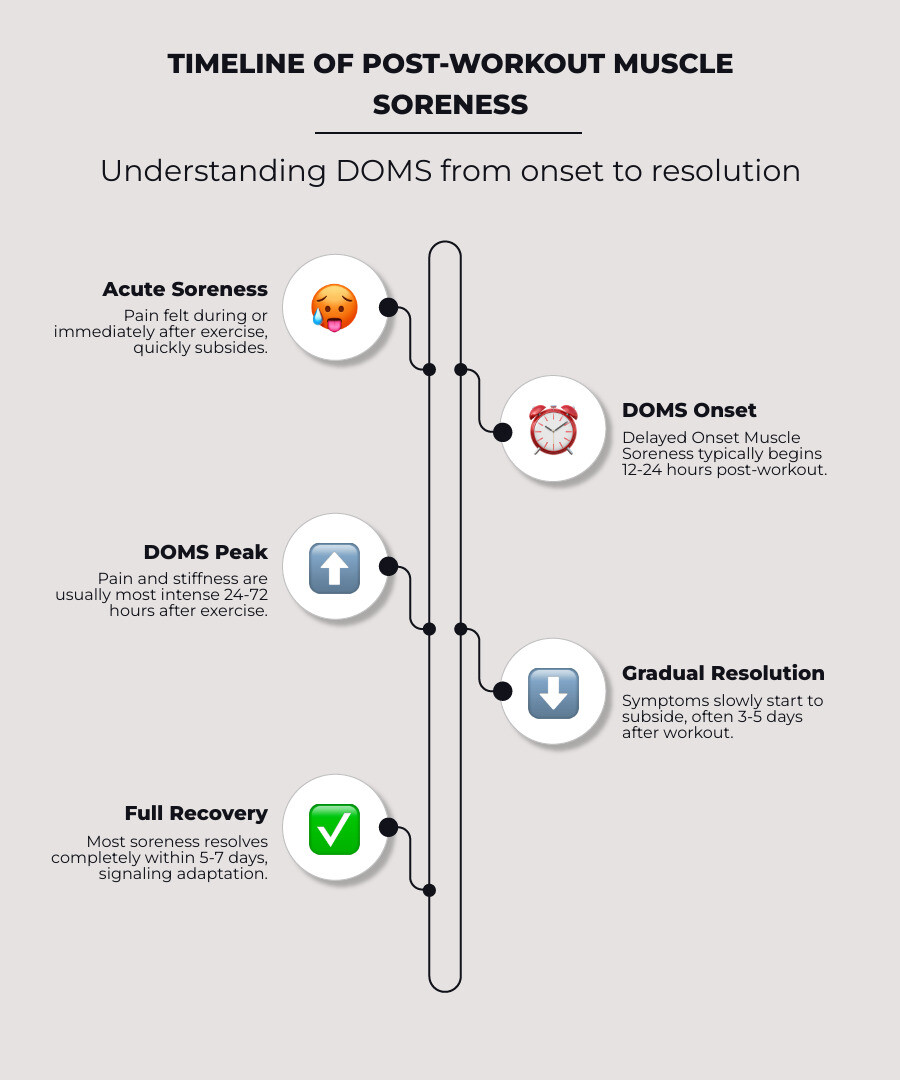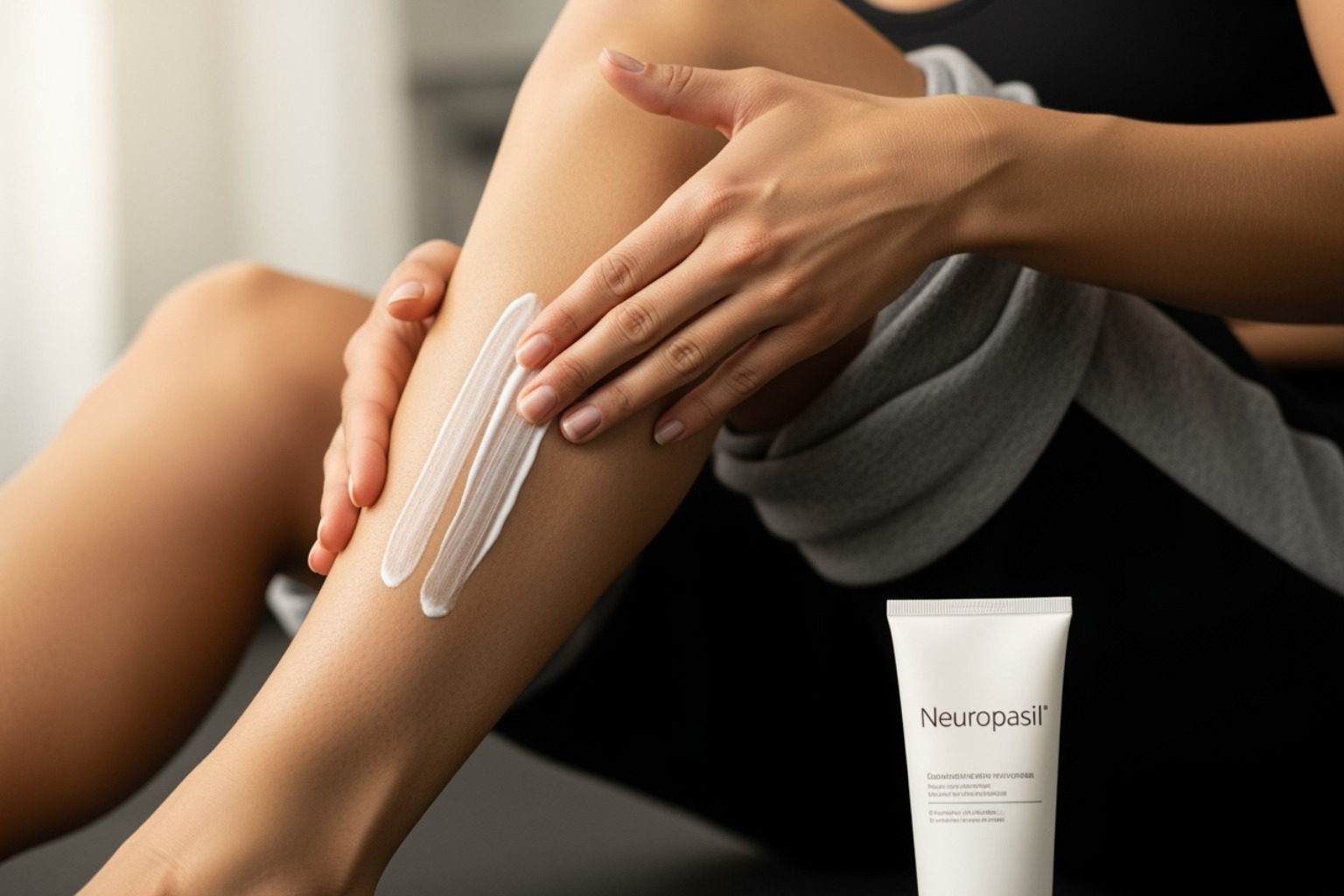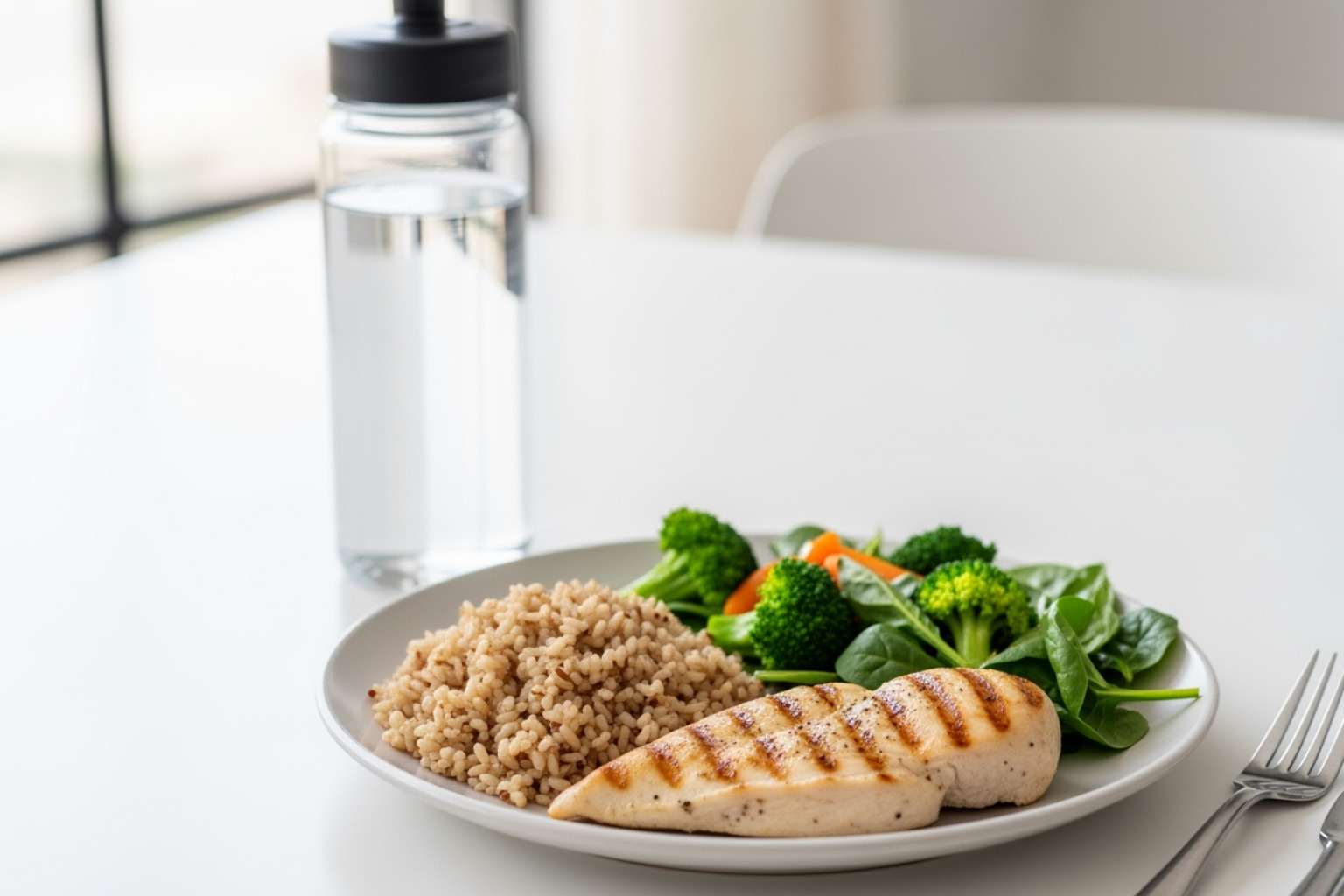Decoding Your Post-Workout Ache: Your Survival Guide
Experiencing muscle hurt after workout is a common feeling, ranging from a mild ache to significant stiffness. This discomfort, known as Delayed Onset Muscle Soreness (DOMS), is a sign of microscopic tears in your muscle fibers that your body is repairing. It often occurs when you try a new exercise or increase intensity, typically beginning 12-24 hours later and lasting for a few days.
Many see this soreness as a "badge of honor," but what's really happening inside your body? And how can you manage it effectively? This guide will help you understand post-workout soreness, distinguish normal aches from potential injury, and provide clear steps for recovery and prevention.
My name is Tony Enrico, and I specialize in helping athletes and individuals overcome the challenges of muscle hurt after workout. At Neuropasil, our mission is to provide effective, fast-acting relief so you can get back to what you love.

Understanding Post-Workout Muscle Pain: What's Happening to Your Body?
That feeling of muscle hurt after workout isn't random discomfort; it's your body repairing and strengthening itself. Let's explore the science behind this common feeling.
The Science Behind Why You Experience Muscle Hurt After Workout
When you push your muscles with new or intense exercises, especially movements that lengthen muscles under tension (eccentric contractions), you create microscopic tears in the muscle fibers. This isn't as scary as it sounds! It's the first step in your body's process to adapt and grow stronger. In response, your body initiates an inflammation response to clear out damaged cells and rebuild tougher muscle tissue. This repair process is what causes the tight, achy feeling.
A common myth is that soreness is caused by lactic acid buildup. While lactic acid causes a burn during a workout, it clears from your system within an hour or so and is not responsible for the soreness you feel a day or two later. The true culprits are those micro-tears and the subsequent healing process. Understanding how eccentric exercises cause DOMS can explain why some workouts leave you sorer than others. For a broader look at general muscle aches, you can also check out our guide on Muscle Aches.
Acute Soreness vs. Delayed Onset Muscle Soreness (DOMS)
It's important to know the two main types of post-workout soreness:
Acute Muscle Soreness: The immediate burning or fatigue you feel during or right after your workout. It's caused by metabolic byproducts and subsides quickly.
Delayed Onset Muscle Soreness (DOMS): The soreness that appears 12 to 24 hours later, caused by microscopic muscle tears and the body's repair process.
Here's a quick comparison:
| Feature | Acute Muscle Soreness | Delayed Onset Muscle Soreness (DOMS) |
|---|---|---|
| Onset | During or immediately after exercise | 12-24 hours after exercise |
| Cause | Lactic acid and metabolic byproduct buildup | Microscopic muscle tears and inflammatory response |
| Sensation | Burning, fatigue, immediate discomfort | Dull ache, stiffness, tenderness, reduced range of motion |
| Duration | Short-lived, subsides within minutes to a few hours | Peaks 1-3 days post-workout, lasts 2-5 days, sometimes up to a week |
The American College of Sports Medicine (ACSM) provides a detailed explanation of DOMS.pdf), confirming its origin in muscle fiber trauma.
Common Symptoms and Timeline of DOMS
When DOMS sets in, you'll likely experience:
- Dull, aching pain across the worked muscles.
- Muscle stiffness and reduced range of motion.
- Tenderness to the touch.
- Temporary reduction in strength.
- Mild swelling in the affected area.
The good news is that DOMS follows a predictable timeline. Symptoms begin 12 to 24 hours post-workout, peak around one to three days, and then gradually subside. Most cases resolve within 3 to 5 days, though some can linger for a week. Knowing this timeline, as documented in research on DOMS symptoms, can help you manage your discomfort.
Is Your Muscle Hurt After Workout a Sign of Progress?
For years, the fitness world has acceptd the "no pain, no gain" philosophy. But while muscle hurt after workout can indicate that your muscles are adapting, it's not the only measure of a successful training session.
Is DOMS a Sign of a 'Good' Workout?
Feeling sore can be satisfying, as it often means your muscles are in the process of getting stronger through muscle adaptation. However, a lack of soreness doesn't mean your workout was a waste. As you train consistently, your body adapts and the soreness lessens. This is a sign of efficiency, not ineffectiveness.
True markers of progress are increased strength, better endurance, and the ability to handle more volume or intensity over time. Consistency and progressive overload—gradually increasing the challenge—matter far more than how sore you feel. While DOMS can show you've challenged your muscles, it's not a reliable measure of workout quality. For more insights, check out our article on After Workout Soreness.
The Risks of Exercising When You're Already Sore
Pushing through significant soreness is risky. If your pain is more than a mild ache (above a 3 out of 10), your muscles haven't fully recovered. Training in this state can interfere with the healing process.
Your body compensates for soreness by altering movement patterns, which compromises your form and can lead to strain on other muscles and joints. Pushing through significant pain increases the risk of muscle strains, overuse injuries like tendinitis, and impaired performance. Cleveland Clinic offers valuable guidance on working out while sore, emphasizing the importance of listening to your body.
Instead of grinding through pain, opt for active recovery. Gentle movement like walking or light swimming increases blood flow to sore muscles, aiding recovery without causing more damage. This approach is far more effective than either complete rest or pushing through an intense workout.
Your Ultimate Toolkit for Relieving Sore Muscles
When that familiar muscle hurt after workout sets in, you want relief. The good news is there's a whole toolkit of strategies to soothe your muscles and speed up recovery.
Active Recovery and Gentle Movement
It might seem counterintuitive, but gentle movement, or active recovery, is often better than complete rest. Light activities like walking, easy cycling, or swimming increase blood flow to sore areas. This helps flush out metabolic waste and deliver fresh oxygen and nutrients that muscles need for repair, all without causing further damage. The American Academy of Family Physicians supports the strategy of active recovery as a valuable tool.
At-Home Therapies for Quick Relief
Beyond active recovery, you can find relief at home. Gentle self-massage or foam rolling can ease tension and improve blood flow. Stretching helps reduce stiffness and improve your range of motion.
Temperature therapy also helps. Warm baths or heat wraps can ease pain and stiffness by increasing blood flow and relaxing muscles. Many people find Epsom salt soaks beneficial for relaxation. On the other hand, cold therapy like an ice pack or cold bath can reduce inflammation and swelling, and some studies suggest cold water immersion can be beneficial. Finally, relaxation techniques like deep breathing can help release tension throughout your body. For more insights, explore our article on What Helps Sore Muscles.
The Role of Topical Pain Relievers
For targeted relief, topical pain relievers are incredibly effective. These creams are applied directly to the skin over the sore muscle, delivering active ingredients right where they're needed.

Topicals often contain ingredients like menthol, which creates a cooling sensation that can distract from pain. Research shows how topical analgesics ease DOMS pain and can help speed up recovery.
At Neuropasil, we understand the need for fast, effective relief. Our natural, fast-acting topical cream is powered by a unique blend of ingredients, including Aloe, Urea, and Menthol. Designed to be non-greasy, Neuropasil provides targeted, soothing relief for both muscle and nerve pain, making it an excellent choice for anyone experiencing muscle hurt after workout. It delivers relief exactly where you need it, helping you bounce back quickly. For a comprehensive guide, check out our article on The Ins and Outs of Best Pain Relief Creams for Muscle Pain.
Proactive Strategies: How to Prevent Muscle Soreness
While some muscle hurt after workout is normal, you can take steps to minimize its frequency and intensity. Combining smart training with healthy habits makes a world of difference. For more tips, check out our guide on Reduce Muscle Soreness After Workout.
The Importance of Your Warm-Up and Cool-Down
Warm-ups and cool-downs are crucial for preventing injury and managing soreness. A good warm-up involves 5-10 minutes of lower-impact aerobic activity and dynamic stretching (stretching with movement) to increase blood flow and prepare muscles for work.
After your workout, end with a proper cool-down that includes static stretching (holding a stretch). While this won't eliminate DOMS, it significantly improves flexibility, which is vital for long-term movement health. Research supports the effectiveness of post-exercise stretching for improving flexibility.
How Nutrition and Hydration Impact Your Recovery
What you eat and drink plays a monumental role in how much muscle hurt after workout you experience.

Nutrition provides the building blocks for recovery. Protein is essential for muscle repair, while carbohydrates replenish your energy stores. Certain foods and supplements, such as omega-3 fatty acids and tart cherry juice, may also help ease DOMS.
Hydration is also key. Dehydration can lead to more muscle damage and soreness. Drink plenty of water before, during, and after your workout to keep muscles hydrated. Studies show that proper hydration can significantly reduce muscle soreness. For a comprehensive look at healthy living and muscle aches, see our guide: Best Ways to Relieve Muscle Aches with Physical Activity and Healthy Living.
Smart Training: The Power of Progressive Overload
To make consistent progress without constant, severe soreness, embrace progressive overload. This means gradually increasing the demands on your muscles over time, rather than making sudden, drastic changes. This approach allows your muscles to adapt and get stronger without being overwhelmed. Increase your workout intensity one small step at a time to minimize the risk of intense DOMS and injury. Listen to your body and make incremental changes for safe, consistent progress.
When Muscle Soreness Becomes a Red Flag
While some muscle hurt after workout is normal, it's crucial to distinguish it from something more serious. Ignoring your body's warning signs can lead to significant injury. For general information, refer to our page on Muscle Pain.
Differentiating Normal Soreness from an Injury
How can you tell the difference? Normal DOMS is a dull, widespread ache across a muscle group. An injury, on the other hand, often involves sharp, stabbing pain localized to a specific spot. As a general rule, DOMS improves with gentle movement and time, while an injury often worsens with movement and doesn't get better after a few days. Other red flags for injury include significant swelling, bruising, or an inability to bear weight. The Mayo Clinic offers guidance on when muscle pain might be serious.
Serious Conditions to Be Aware Of
In rare cases, severe muscle pain can indicate a serious medical condition requiring immediate attention.
Rhabdomyolysis: A dangerous condition where muscle fibers break down rapidly. The hallmark symptom is severe muscle pain accompanied by weakness and, most distinctively, dark, tea-colored urine. If you notice this, seek emergency medical attention immediately. More information is available on Rhabdomyolysis.
Compartment Syndrome: An extremely rare but serious condition where severe muscle swelling cuts off blood flow. It causes extreme pain, often with numbness or tingling, and an inability to move the muscle. This is a medical emergency.
When to See a Doctor for Your Muscle Hurt After Workout
See a healthcare provider if you experience any of the following:
- Pain that lasts longer than 7 days.
- Pain so severe it interferes with daily activities or sleep.
- Signs of infection, such as redness, warmth, or fever.
- Symptoms of a serious condition, like dark urine, severe swelling, or numbness.
- Chest pain, abnormal heartbeat, or shortness of breath, which could be warning signs of a heart attack and require immediate emergency care.
The Mount Sinai Health Library provides valuable guidance on when to seek medical help for muscle aches. Always err on the side of caution and consult a professional if something feels wrong.
Frequently Asked Questions about Post-Workout Soreness
Let's address some common questions about muscle hurt after workout to help you steer your recovery with confidence.
How long is too long for muscles to be sore?
Normal DOMS typically lasts 2 to 5 days, though it can sometimes persist for up to a week. You should consult a healthcare provider if your soreness lasts longer than 7 days, is severe enough to interfere with daily life, or is accompanied by red flags like dark-colored urine or severe swelling.
Should I take painkillers for DOMS?
When you're in pain, it's tempting to reach for over-the-counter painkillers. However, it's important to consider that the body's inflammatory response is a necessary part of the muscle repair process. Some medications, particularly non-steroidal anti-inflammatory drugs (NSAIDs), may interfere with long-term muscle healing, though research is ongoing.
Topical relief offers a great alternative, providing comfort directly to the sore area without disrupting the body's internal healing mechanisms. Products like Neuropasil can soothe discomfort effectively. As always, you should consult your healthcare provider before taking any medication to ensure it's the right choice for you.
Does stretching before or after a workout prevent soreness?
Stretching plays a role in workout safety and flexibility, but its effect on soreness is often misunderstood. A dynamic warm-up before exercise is crucial for preparing your muscles for activity. Static stretching during your cool-down is excellent for improving flexibility and long-term mobility. However, neither will completely prevent DOMS. The most effective strategy for preventing severe muscle hurt after workout is gradual progression in your training intensity, which allows your muscles to adapt over time.
Conclusion
That familiar post-workout ache isn't your enemy; it's a sign that your body is adapting and growing stronger. DOMS is a normal part of the process, but its presence or absence isn't the ultimate measure of a good workout.
What truly matters is how you respond. By understanding the science, you can learn to distinguish normal aches from injury warnings. Your recovery toolkit—including active recovery, at-home therapies, and proper nutrition—is key. Smart prevention strategies like proper warm-ups, cool-downs, and progressive overload will keep you moving forward safely. Most importantly, listening to your body is a skill that will serve you throughout your fitness journey.
At Neuropasil, we understand that muscle hurt after workout can be a barrier to your goals. That's why we created our natural, fast-acting topical cream, powered by Aloe, Urea, and Menthol. It's non-greasy and delivers targeted relief right where you need it for sore muscles, nerve pain, or everyday aches. Our customers trust Neuropasil to help them recover effectively and get back to what they love.
Recovery is an active part of getting stronger. Accept the soreness, treat your body with care, and keep moving forward with confidence.
Find fast-acting relief for your sore muscles and get back to living your active life.
References
Throughout this guide, we've drawn on trusted medical research and expert sources to help you understand muscle hurt after workout.
- The American College of Sports Medicine (ACSM) provides a comprehensive overview of Delayed Onset Muscle Soreness.pdf).
- The American Council on Exercise (ACE) explains the principle of progressive overload.
- The American Heart Association lists the warning signs of a heart attack.
- Cleveland Clinic offers practical guidance on whether to work out when sore.
- Mayo Clinic provides information on muscle pain causes and when to see a doctor.
- MedicineNet's article explains what type of exercise causes DOMS.
- Mount Sinai's health library offers guidance on when to seek medical help for muscle aches.
- The National Library of Medicine (NLM/PMC) hosts numerous studies, including research on:
- The UK's National Health Service (NHS) provides helpful information on pain and injuries after exercise.














